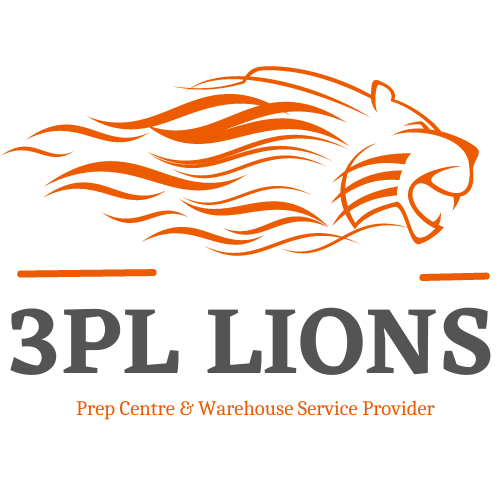In the rapidly evolving world of e-commerce, third-party logistics (3PL) and dropshipping have emerged as powerful strategies for businesses aiming to streamline operations, reduce overhead costs, and enhance customer satisfaction. Combining the strengths of both methods, 3PL dropshipping offers a seamless solution for managing inventory, fulfillment, and shipping, allowing businesses to focus on growth and customer service. This comprehensive guide explores the concept of 3PL dropshipping, its benefits, challenges, and how to choose the right 3PL partner.
Understanding 3PL Dropshipping
Third-Party Logistics (3PL): 3PL refers to outsourcing logistics and supply chain management to an external provider. 3PL providers handle various tasks such as warehousing, inventory management, order fulfillment, and shipping. They act as an intermediary between the seller and the customer, ensuring efficient and timely delivery of products.
Dropshipping: Dropshipping is a retail fulfillment method where the seller does not keep products in stock. Instead, when a customer places an order, the seller purchases the item from a third party, typically a wholesaler or manufacturer, who then ships it directly to the customer. This eliminates the need for inventory management and reduces upfront costs.
3PL Dropshipping: 3PL dropshipping combines the advantages of both 3PL and dropshipping. In this model, the 3PL provider not only stores and manages inventory but also handles the order fulfillment process, including picking, packing, and shipping products directly to the customer. This allows sellers to offer a wide range of products without the burden of inventory management and logistics.
Benefits of 3PL Dropshipping
- Reduced Overhead Costs: By outsourcing warehousing and fulfillment to a 3PL provider, businesses can significantly reduce their overhead costs. There is no need to invest in warehouse space, equipment, or personnel, allowing sellers to allocate resources to other critical areas of their business.
- Scalability: 3PL dropshipping offers unparalleled scalability. As your business grows, your 3PL provider can accommodate increased order volumes without the need for significant investments in infrastructure or resources. This flexibility is particularly beneficial during peak seasons or promotional periods.
- Focus on Core Competencies: Outsourcing logistics and fulfillment allows businesses to focus on their core competencies, such as marketing, product development, and customer service. This can lead to improved business performance and accelerated growth.
- Access to Expertise and Technology: 3PL providers leverage their expertise and advanced technology to optimize the supply chain. This includes sophisticated inventory management systems, real-time tracking, and data analytics, ensuring efficient and accurate order fulfillment.
- Faster Shipping Times: Many 3PL providers have a network of strategically located warehouses, enabling faster shipping times and reduced transit costs. This leads to improved customer satisfaction and a competitive edge in the market.
- Wider Product Range: With 3PL dropshipping, businesses can offer a broader range of products without the need to stock inventory. This allows sellers to quickly adapt to market trends and customer demands, enhancing their product offerings and increasing sales potential.
Challenges of 3PL Dropshipping
- Quality Control: Ensuring product quality and consistency can be challenging when relying on a third-party provider. It is crucial to establish clear quality control standards and regularly monitor the 3PL provider’s performance.
- Dependency on Third Parties: Relying on a 3PL provider means entrusting a significant part of your business operations to an external party. Any issues or delays on their end can impact your business. Establishing a strong partnership and clear communication channels is essential to mitigate this risk.
- Inventory Management: While 3PL providers offer advanced inventory management systems, sellers must still keep track of stock levels and coordinate with the provider to avoid stockouts or overstock situations. Effective inventory management practices and regular communication are key to overcoming this challenge.
- Cost Considerations: While 3PL dropshipping can reduce certain costs, it is essential to evaluate the overall cost structure, including fulfillment fees, storage fees, and shipping costs. Conducting a cost-benefit analysis can help determine if 3PL dropshipping is the right fit for your business.
Choosing the Right 3PL Dropshipping Partner
- Reputation and Experience: Look for a 3PL provider with a strong reputation and extensive experience in the industry. Check customer reviews, testimonials, and case studies to gauge their reliability and performance.
- Technology and Integration: Ensure that the 3PL provider uses advanced technology for inventory management, order processing, and shipping. Seamless integration with your e-commerce platform is crucial for efficient operations.
- Location and Network: Consider the provider’s warehouse locations and their network of distribution centers. Strategic placement can significantly impact shipping times and costs.
- Scalability: Choose a provider that can scale with your business and accommodate fluctuations in order volumes. This is particularly important for businesses experiencing rapid growth or seasonal demand spikes.
- Customer Support: Reliable customer support is essential for addressing any issues or concerns promptly. Ensure the 3PL provider offers accessible and responsive support channels.
- Cost Structure: Evaluate the provider’s pricing model, including storage fees, fulfillment fees, and shipping costs. Compare these costs with the potential benefits to determine the overall value.
Conclusion
3PL dropshipping offers a powerful solution for e-commerce businesses looking to streamline operations, reduce costs, and enhance customer satisfaction. By leveraging the expertise and resources of a 3PL provider, sellers can focus on growing their business and delivering a superior customer experience. While there are challenges to consider, careful selection of a reliable 3PL partner can help mitigate risks and unlock the full potential of 3PL dropshipping. With the right approach and a strong partnership, businesses can achieve greater efficiency, scalability, and profitability in the competitive world of e-commerce.

